Next
Back

Invented in 1918, Enigma machines were encryption devices, using letter substitution where, if a letter was pressed, a different one appeared. Pressed again, yet another one appeared. Basic Enigmas encoded letters with a tri-rotor system. The six rotor orders produced 26-x-26-x-26-x-6 (105,456) possible outcomes. To read encoded messages, one calibrated their machine exactly like the sender’s.
Concerning enciphering:
"...like the rotor order, plugboard and ring-setting would be common to every operator in the network. Suppose the ground-setting were 'RTY.' Then the cipher clerk would set up his Enigma with the specified rotor order, plugboard and ring setting. He would turn the rotors to read 'RTY.' Then his job was to encipher, twice over, his own choice of rotor setting. That is, he would encipher 'WHJWHJ,' producing, say 'ERIONM.' He would transmit 'ERIONM,' then turn the rotors to 'WHJ,' encipher the message, then transmit it."
Hodges, Andrew. Alan Turing - the Enigma. Princeton, New Jersey, Oxford : Princeton UP, 2014.
Convery, Bella. Spy Museum Enigma Replica Photo. 11 Nov. 2019.
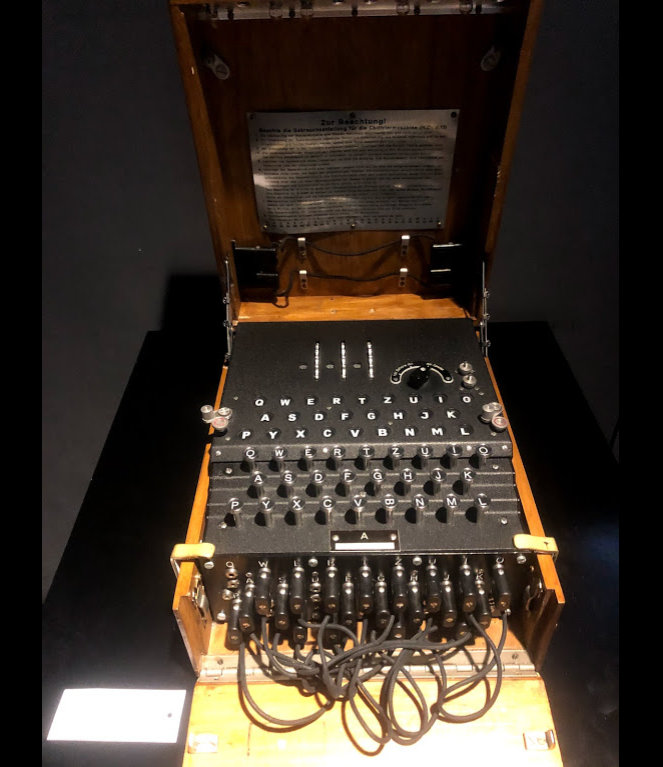
Advantage:
"every message after the first six letters was enciphered
on a different setting."
Hodges, Andrew. Alan Turing - the Enigma. Princeton, New Jersey, Oxford : Princeton UP, 2014.
Disadvantage:
"for one day, all the operators in the network would be using exactly the same state of the machine for the first six letters of their messages ... those six letters always represented the encipherment of a repeated triplet."
Hodges, Andrew. Alan Turing - the Enigma. Princeton, New Jersey, Oxford : Princeton UP, 2014.
Three
rotor-wheels
held six
combinations
Sebag-Montefiore, Hugh. Enigma: Battle for the Code.
London, Weidenfeld & Nicolson, 2001.
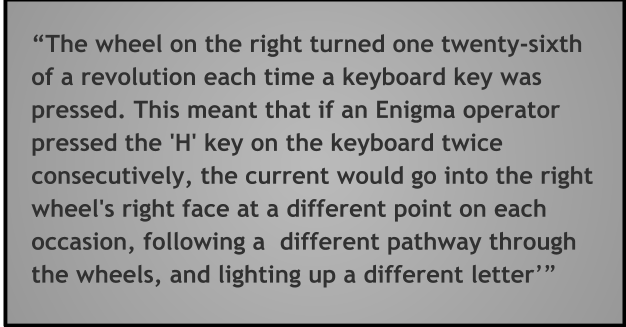
“Ringstellung” changed wiring’s positions corresponding to rotors
Sebag-Montefiore, Hugh. Enigma: Battle for the Code.
London, Weidenfeld & Nicolson, 2001.
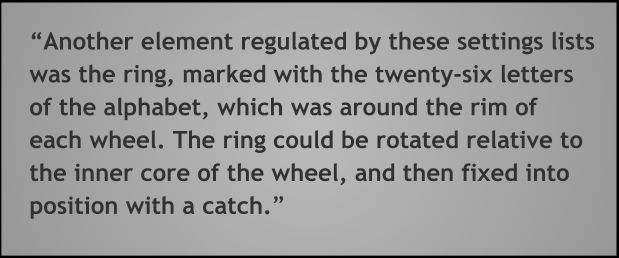
“Stecker,” the
greatest complicator, provided letter swappage before/after rotor-functions:
150,738,300,000,000 possibilities
Sebag-Montefiore, Hugh. Enigma: Battle for the Code.
London, Weidenfeld & Nicolson, 2001.
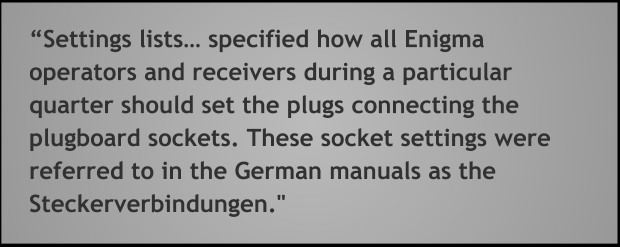
Budiansky, Stephen. Battle of Wits : The Complete Story of
Codebreaking in World War II. New York, Touchstone Book, 2002.
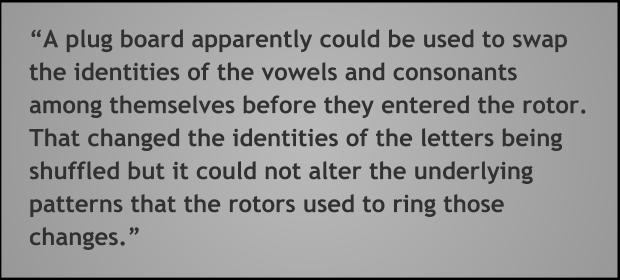
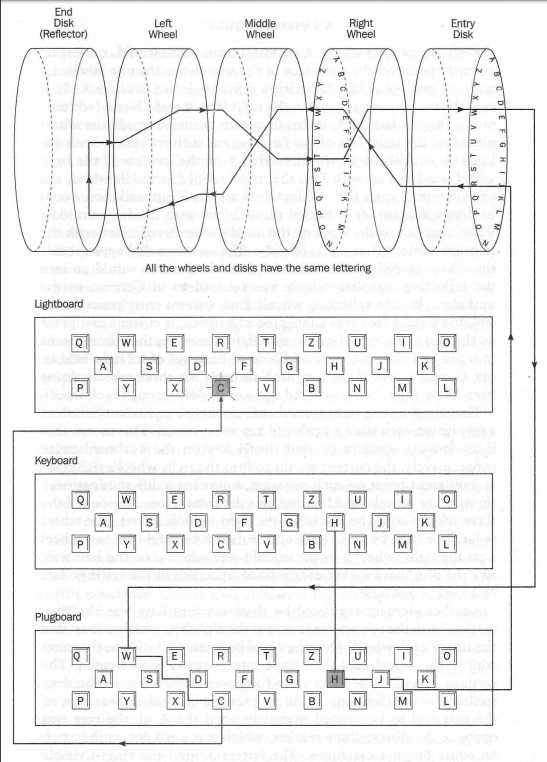
Sebag-Montefiore, Hugh. Enigma: Battle for the Code.
London, Weidenfeld & Nicolson, 2001
From Turing's view, Enigma’s physical constructions were unimportant. He cared about its logical functions; he began working on his “bombe.”